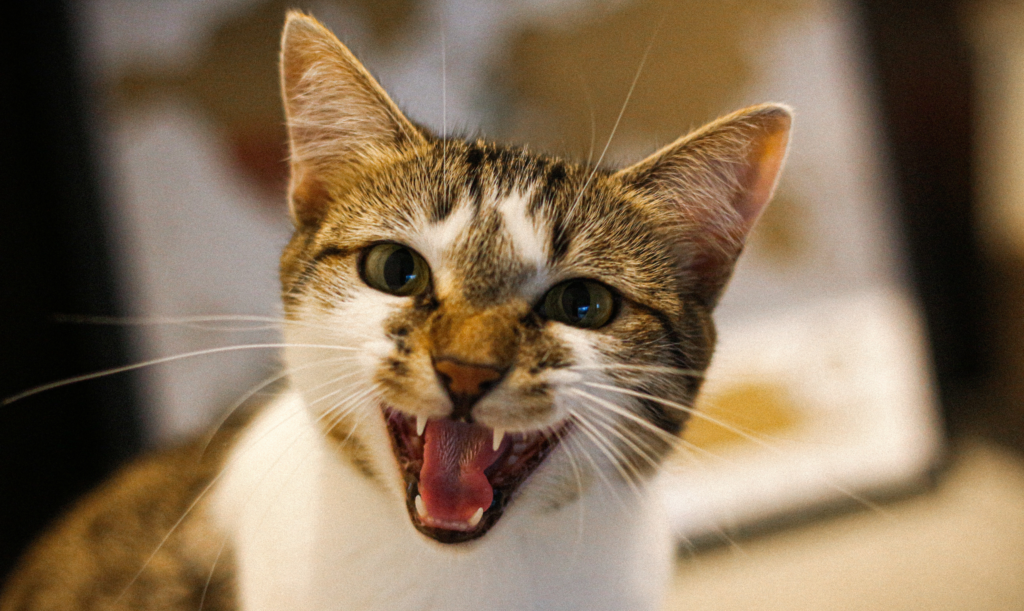Does Responding To A Kitty’s Meows Strengthen
Communication?
In the realm of pet ownership, there’s an unwritten contract of communication between humans and their feline companions.
While cats can’t speak our language, they have developed a remarkable ability to convey their needs and emotions through various sounds
with the iconic “meow” being their primary mode of expression. As a devoted cat owner.
have you ever wondered if responding to your kitty’s meows can strengthen your bond and communication with them?
This article explores the fascinating world of feline communication and offers insights into how responding to those adorable meows
can enhance your connection with your beloved furball.

Understanding the Language of Meows
The Versatile Meow
The meow is a highly versatile vocalization used by cats to communicate with humans, other cats, and sometimes even other animals
It can vary in pitch, duration and intensity, each conveying a specific message.
Context Matters
Cats use meows to express a wide range of emotions and needs, such as hunger, loneliness, playfulness, or even discomfort.
Paying attention to the context of the meow
is crucial in understanding what your cat is trying to tell you.
Building Trust
When you respond to your cat’s meows, you’re acknowledging their attempt to communicate. This acknowledgment helps in building trust and
strengthening your bond with your feline friend.
Strengthening the Human-Feline Connection
Emotional Responsiveness
By responding to your cat’s meows, you show emotional responsiveness, which is essential in any relationship, even with your pets.
This responsiveness can lead to a more profound connection between you and your kitty.
Reinforcing Positive Behavior
Positive reinforcement is a powerful tool in cat training. When you respond to meows associated with desirable behaviors
such as using the litter box or playing gently you encourage these behaviors, making them more likely to recur.
Reducing Stress and Anxiety
Cats can experience stress and anxiety, and meowing can be a sign of these feelings.
Responding to their meows with comfort and attention can help alleviate their stress and create a sense of security.
The Dos and Don’ts of Responding to Meows
Do:
- Pay attention: Always be attentive to your cat’s meows and try to decipher their meaning.
- Respond with love: Offer affection, petting, or playtime when appropriate.
- Provide for their needs: If hunger is the issue, ensure they have access to food and water.
Don’t:
- Ignore them: Ignoring meows can make your cat feel neglected.
- Punish or scold: Avoid scolding your cat for meowing, as it can lead to confusion and fear.
- Overindulge: While it’s essential to respond, be mindful not to overfeed your cat or give in to every demand.
Conclusion
In the world of cat-human communication, responding to a kitty’s meows plays a significant role in strengthening the bond between pet and owner
These endearing vocalizations are your cat’s way of reaching out to you, and by responding with care and understanding
you can create a deeper connection and enhance your feline-human relationship.
Frequently Asked Questions (FAQs)
- Do all cats meow for the same reasons?
No, not all cats meow for the same reasons. The meaning behind a cat’s meow can vary based on context, personality
and individual preferences. - Should I respond to my cat’s meows at night?
It’s a good idea to investigate if your cat’s nighttime meows are unusual. They might be trying to communicate something important
like discomfort or hunger. - Can responding to meows spoil my cat?
Responding to meows with love and care is not spoiling your cat. It’s a way to build trust and strengthen your bond. However
it’s essential to strike a balance. - Why do some cats meow excessively?
Excessive meowing can be a sign of an underlying issue, such as illness or anxiety.
Consult your veterinarian if your cat’s meowing becomes excessive or unusual. - Is it possible to train a cat to meow less?
Yes, with proper training and attention to their needs, you can reduce excessive meowing in cats.
Training methods should always be positive and reward-based.
